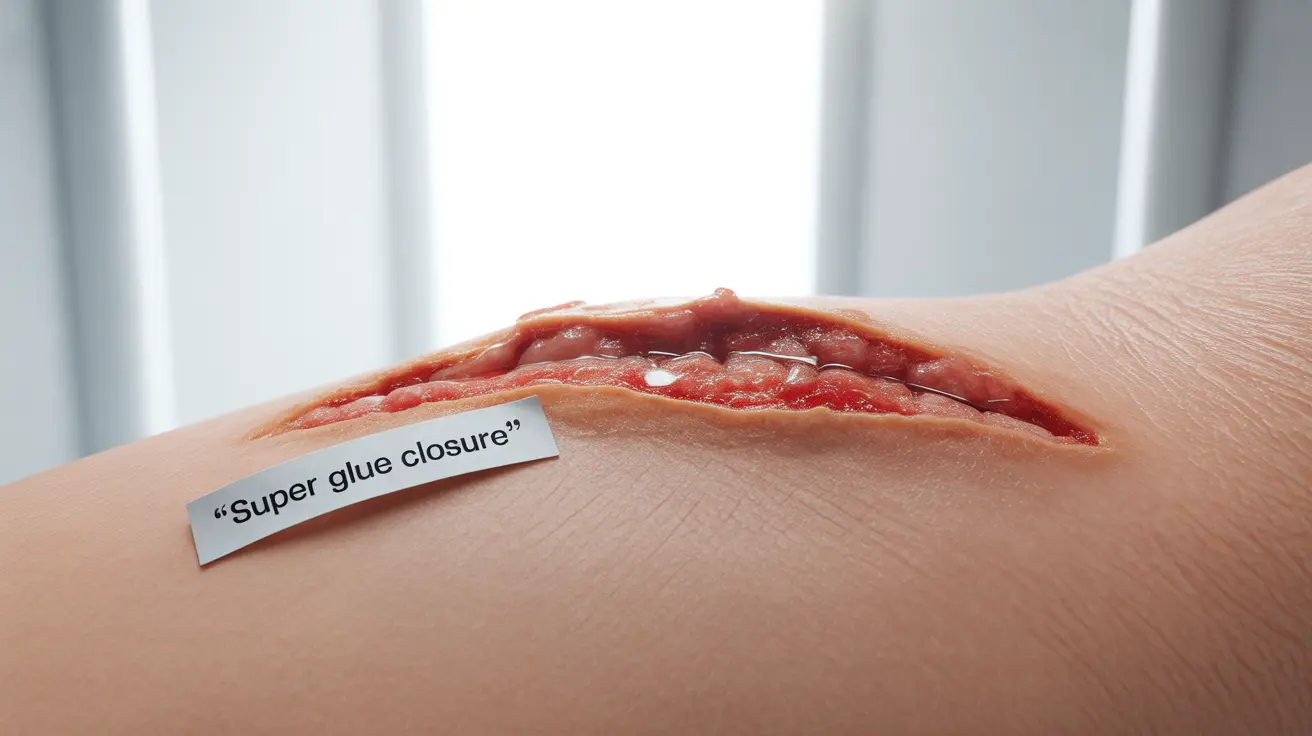When medical professionals use surgical glue (also known as tissue adhesive) to close wounds, it's generally a safe and effective method. However, in some cases, these glued wounds can reopen, creating a potentially serious situation that requires prompt attention and proper care.
Understanding why glued wounds reopen, recognizing the signs, and knowing how to respond are crucial for preventing complications and ensuring proper healing. This comprehensive guide will help you understand everything you need to know about managing reopened glued wounds.
Common Causes of Reopened Glued Wounds
Several factors can contribute to a glued wound reopening during the healing process:
- Physical stress or tension on the wound site
- Premature removal of dressings or protective coverings
- Infection at the wound site
- Poor wound care technique
- Excessive moisture exposure
- Underlying health conditions affecting healing
Signs and Symptoms of a Reopened Wound
Identifying when a glued wound has reopened is crucial for prompt intervention. Watch for these key indicators:
Physical Signs
- Visible separation of wound edges
- Fresh bleeding or drainage
- Visible deep tissue
- Gaping or splitting of the wound
Associated Symptoms
- Increased pain around the wound site
- Warmth or redness extending beyond the wound edges
- Unusual discharge or odor
- Fever or general discomfort
Treatment Options for Reopened Wounds
The appropriate treatment for a reopened glued wound depends on several factors, including the size of the reopening, location, and presence of complications.
Immediate Steps
- Clean the area gently with sterile saline
- Apply appropriate sterile dressing
- Seek medical attention, especially for larger openings
- Keep the area protected and dry
Professional Medical Care
Healthcare providers may recommend one or more of the following treatments:
- Re-closure with new tissue adhesive
- Traditional suturing if appropriate
- Advanced wound care techniques
- Antibiotics if infection is present
Prevention Strategies
Taking proper precautions can significantly reduce the risk of a glued wound reopening:
- Follow all post-procedure care instructions carefully
- Avoid stretching or putting pressure on the wound
- Keep the wound clean and dry
- Maintain good nutrition for optimal healing
- Attend all follow-up appointments
- Monitor for early signs of complications
Risk Factors and Special Considerations
Certain conditions and lifestyle factors can increase the risk of wound reopening:
- Diabetes
- Smoking
- Poor nutrition
- Obesity
- Immune system disorders
- Certain medications (especially steroids)
Frequently Asked Questions
What causes a glued wound to reopen after surgery?
Glued wounds typically reopen due to excessive physical stress, infection, poor wound care, or underlying health conditions that affect healing. Premature exposure to moisture or mechanical stress can also compromise the adhesive's effectiveness.
What are the signs and symptoms of a glued wound that has reopened?
Key signs include visible separation of the wound edges, fresh bleeding or drainage, increased pain, and redness around the wound site. You may also notice warmth, unusual discharge, or gaps in the wound closure.
How is a reopened glued wound treated and when is surgery needed?
Treatment depends on the extent of reopening. Minor separations may be managed with proper wound care and new tissue adhesive, while larger openings might require traditional suturing or surgical intervention, especially if infection is present.
What can I do to prevent my glued wound from reopening during healing?
Follow wound care instructions carefully, keep the area clean and dry, avoid stretching or putting pressure on the wound, maintain good nutrition, and attend all follow-up appointments with your healthcare provider.
Are certain health conditions or habits more likely to cause a glued wound to reopen?
Yes, conditions like diabetes, obesity, and immune disorders can increase the risk of wound reopening. Habits such as smoking, poor nutrition, and not following proper wound care instructions also increase the risk of complications.




